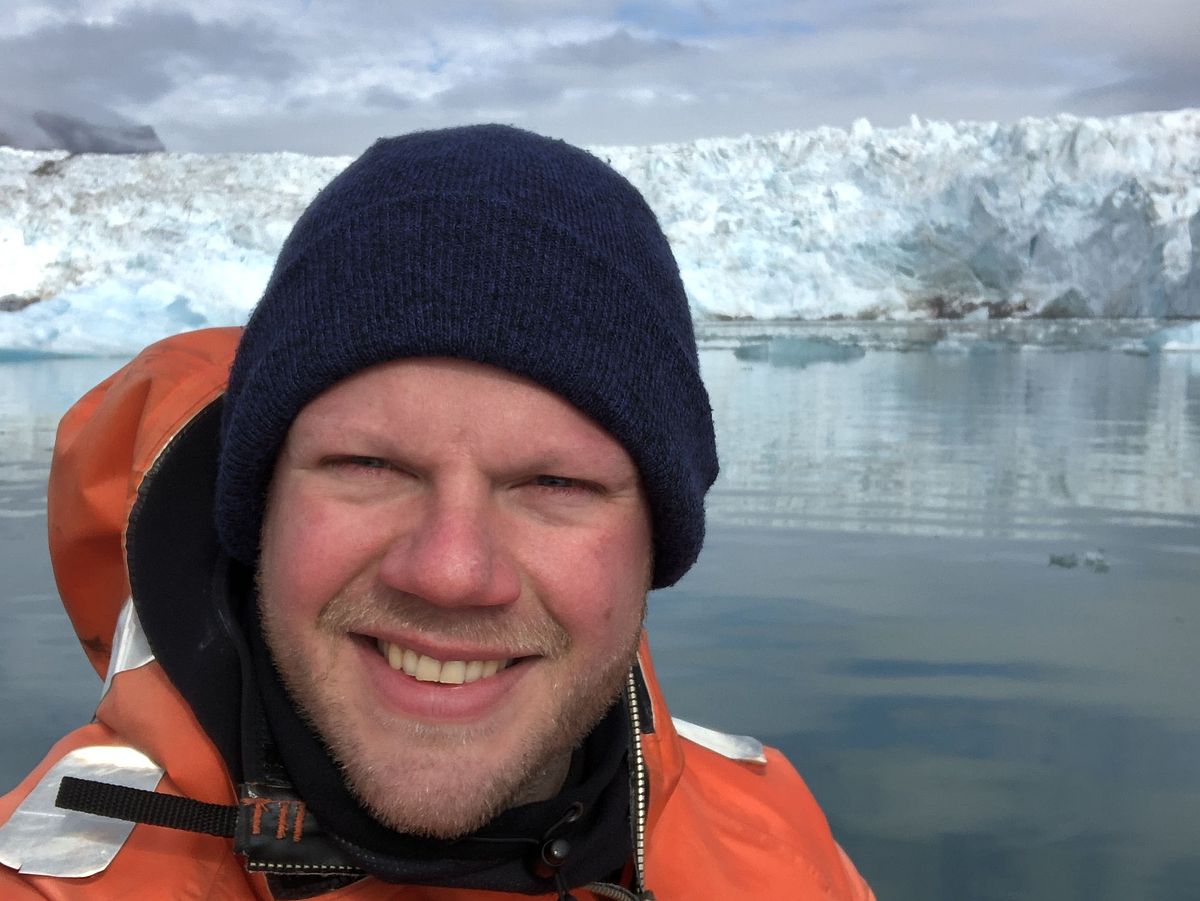An espresso with… Dr Simon Jungblut

The marine biologist Simon Jungblut (born 1989) completed his bachelor's degree in biology/chemistry education at the University of Bremen from 2008–2011 and the Erasmus Mundus Master of Science in Marine Biodiversity and Conservation from 2011–2013. From 2014–2017 he did his PhD in marine zoology in Bremen. Today, he is the coordinator of the EU-funded research project FACE-IT at the University of Bremen.
Why did you decide to study at the University of Bremen?
I chose Bremen explicitly for marine sciences, after reading up on it extensively beforehand. There is no better location for marine biology in Germany because we have so many scientific institutions here in the surrounding area that work together with the university.
So early on, you were already committed to marine biology. Where did your enthusiasm come from?
It started with a total cliché. When I was 6 years old, I saw the movie Free Willy, and I got really into dolphins and whales. But then I discovered that there are many more creatures in the ocean, and I found that very exciting. After that I only ever had one career aspiration: marine biologist.
Did your studies fulfilyour expectations?
I was very satisfied with my studies. I did the first year of my international master's degree in Bremen, with a lot of practical work at the Alfred Wegener Institute, Helmholtz Centre for Polar and Marine Research (AWI) in Bremerhaven, so I was really close to research. Of course, it was nice to work with state-of-the-art equipment, of which we had almost none at the university. These cooperations enriched my studies significantly.
What was the most formative experience for youduring your studies?
As master's students, we got the chance to go on the very first training voyage of AWI’s research ship Polarstern. We sailed from Bremerhaven to Cape Town and on board, we learned about a wide range of marine science methods and listened to lectures. As an exam assignment, we wrote a report about our own research results during the voyage and shot videos about our work. We were familiarised with the complete scientific work process, condensed into five weeks. That was a great experience.
After your master's degree, you did your doctorate and didn't become a teacher? How did that come about?
It had been clear to me for a long time that I wanted to do a doctorate. Then I started a project with Wilhelm Hagen, who is a professor of marine zoology in our department, and wrote my dissertation on invasive crabs in the North Sea. But research and teaching were always synonymous for me. At the university I always worked as a student assistant or tutor and also had a teaching obligation during my doctorate, and that was always fun. As a scientist, you should always be a teacher.
You are now managing the four-year EU research project FACE-IT at the university. What is it about?
The project is led by Prof Kai Bischof, head of the marine botany group at the university. With our international consortium, we are investigating and comparing different socio-ecological fjord systems in the Arctic, where the loss of ice from glaciers has progressed to different extents. We are looking – together with social scientists, by the way – at the fjords as a comprehensive social system that also involves people, fishing and tourism. This is climate impact research, where we develop a concept together with local people for how to deal with and adapt to climate change.
As a marine biologist, do you also do volunteer work?
Yes, within the framework of the Bremen Society for Natural Sciences (NWV Bremen). We noticed that young scientists, and by that I mean even those at bachelor and master level, have relatively little experience in presenting their work. So we launched ICYMARE, the International Conference for Young Marine Researchers, and created a platform for them to gain initial conference experience and to present bachelor's and master's theses – a networking event where participants get the chance to build a foundation for their own network. At the first conference, we had 350 participants.
What advice can you give to today's students?
When you begin your studies, you’re a number. It’s up to you yourself to put a face on that number, to get involved, to ask questions, to participate. Then you stay in people’s minds. That’s networking.

